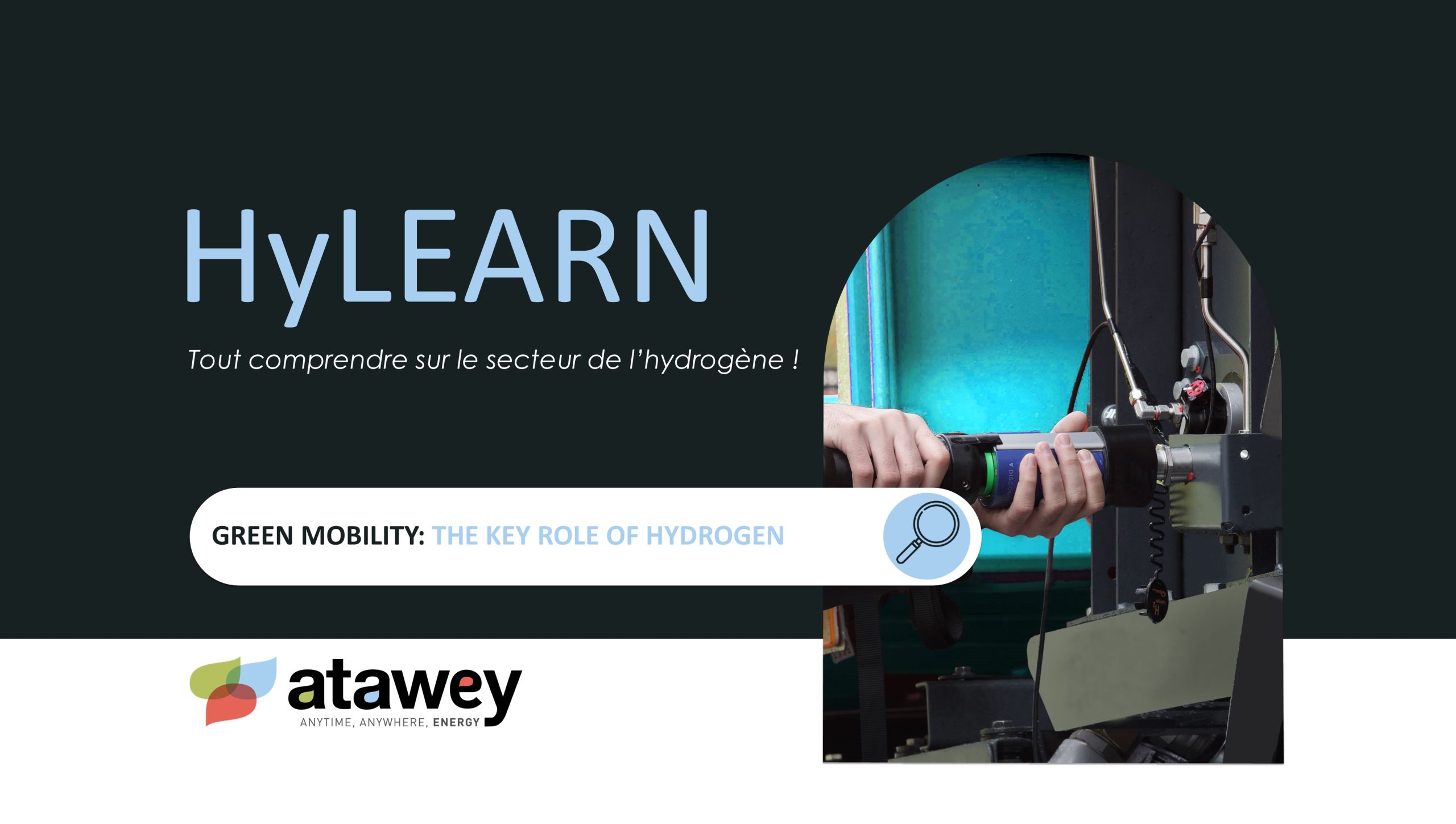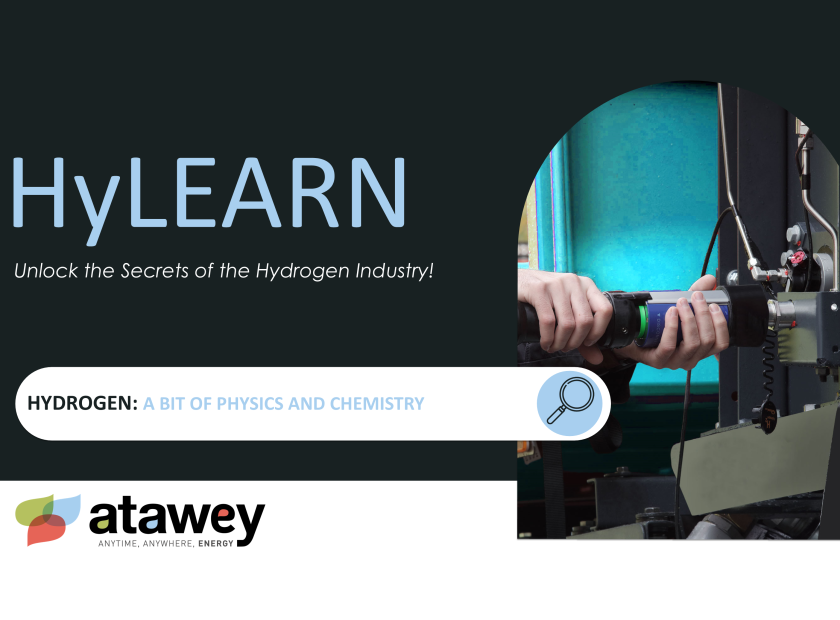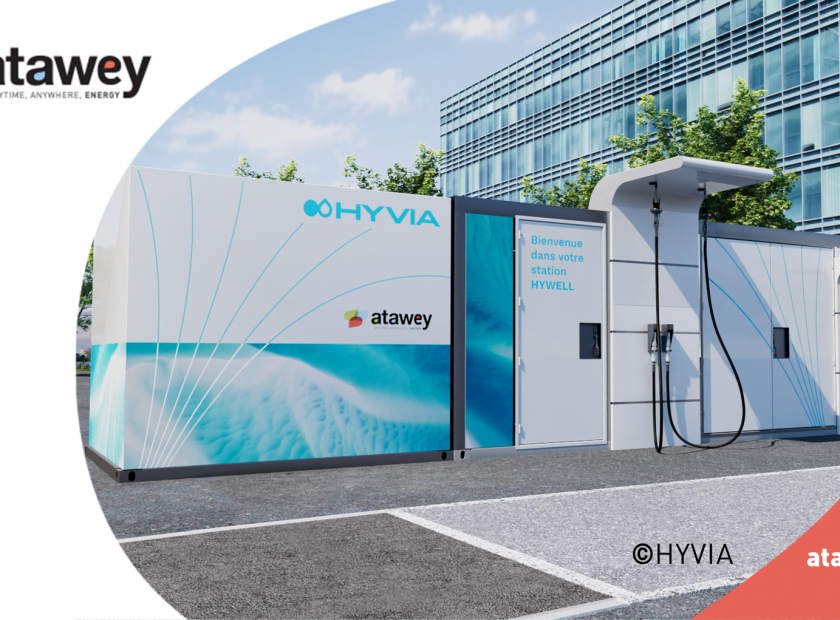
Green Mobility: The Role of Hydrogen in Technological Transition
Faced with the climate emergency, green mobility has become a key lever in reducing greenhouse gas emissions. Today, transport accounts for approximately 21% of global CO₂ emissions (31% in Europe), primarily due to its dependence on fossil fuels. The transition to low-carbon mobility relies on several solutions: energy efficiency, technological advancements (electric and hydrogen), and the use of renewable energy sources.
While electric mobility is well-suited for short urban journeys, hydrogen mobility presents a compelling alternative for intensive use cases. However, before delving into these technologies, it is crucial to consider a fundamental pillar of this transition: energy efficiency.
Energy Efficiency: A Pillar of Low-Carbon Mobility
Decarbonizing transport cannot rely solely on technological innovation. Adopting a more energy-efficient approach to mobility is a major challenge in reducing the overall carbon footprint.
What Is Energy Efficiency?
Energy efficiency aims to reduce energy consumption by optimizing usage and modifying behaviors. In the transport sector, this translates to:
- Promoting active mobility (walking, cycling, scooters) for short trips.
- Expanding public transportation to reduce reliance on private cars.
- Encouraging carpooling and vehicle sharing to maximize existing resources.
- Rethinking urban planning to minimize unnecessary travel (15-minute city concept, remote work, etc.).
Energy Efficiency and Decarbonized Vehicles: A Winning Combination
Although decarbonized mobility relies on electric and hydrogen-powered vehicles, it must not lead to increased energy consumption. Even clean vehicles require resources for their production (rare metals, batteries, hydrogen). The challenge is twofold: reducing unnecessary travel while transitioning to low-carbon vehicles.
Electric and Hydrogen Mobility: Two Complementary Solutions
Rather than pitting electric and hydrogen mobility against each other, it is essential to understand their specific advantages and how they complement one another.
- Electric mobility (lithium-ion batteries) is ideal for lightweight personal vehicles and short-distance travel, particularly in urban areas.
- Hydrogen mobility, on the other hand, is better suited for intensive industrial and professional use: trucks, trains, ships, buses, and heavy-duty logistics.
Another key consideration is the impact on the electricity grid. A large-scale shift to electric vehicles would significantly increase electricity demand, potentially overloading existing infrastructure. Hydrogen helps balance energy distribution, particularly through power-to-gas technology, which converts surplus electricity from intermittent renewable sources into hydrogen for later use. This is a major advantage, given the variable nature of renewable energy (solar, wind, etc.).
Electric Mobility: A Solution for Everyday Use
Battery electric vehicles (BEVs) are currently the most widely adopted solution for reducing CO₂ emissions in individual transport. They are particularly well-suited for daily commutes.
✅ Advantages of electric vehicles:
- Higher energy efficiency: Approximately 80% of electricity is converted into motion (compared to 30% for hydrogen-powered engines).
- Well-developed technology: The range of available electric vehicles has expanded significantly in recent years.
- Convenient charging: Vehicles can be charged at home or at public charging stations.
❌ Limitations of electric vehicles:
- Long charging times: A full charge can take several hours, even at fast-charging stations.
- Grid dependency: Mass adoption of BEVs could place significant strain on energy infrastructure.
Hydrogen Mobility: Ideal for Intensive Use
Unlike battery-powered vehicles, hydrogen fuel cell electric vehicles (FCEVs) generate electricity by converting hydrogen into power. This technology is particularly suited to heavy-duty applications, long-distance travel, and intensive use (e.g., taxis, freight transport).
✅ Advantages of hydrogen vehicles:
- Fast refueling: A full hydrogen refill takes less than 5 minutes, compared to several hours for an electric vehicle.
- Longer range: Hydrogen-powered buses and trucks can travel 600–800 km without refueling.
- Higher payload capacity: Hydrogen requires smaller batteries than electric vehicles, leaving more space and weight capacity for passengers or cargo.
- Less strain on the electricity grid: Unlike battery-powered vehicles, hydrogen can be produced and stored independently of the power grid.
❌ Limitations of hydrogen vehicles:
- High production costs: Green hydrogen remains more expensive than electricity from renewable sources.
- Technological maturity: Hydrogen vehicle technology is newer than battery technology, with fewer available models and a developing refueling infrastructure.
Hydrogen Mobility for Intensive Applications
Hydrogen is particularly advantageous in three main categories:
1. Road and Urban Transport
Hydrogen serves as an ideal alternative for heavy-duty vehicles, especially those with captive uses (dedicated fleets operating in specific areas) or transit uses (long-distance transport and freight).
- Passenger transport: Taxis, urban and intercity buses.
- Waste collection: Garbage trucks.
- Freight transport: Long-haul trucks, coaches.
2. Specialized Vehicles
Hydrogen is also well-suited for continuously operating vehicles and those requiring high payload capacity in industrial settings or remote areas.
- Material handling equipment: Forklifts, warehouse logistics vehicles.
- Construction machinery: Excavators, bulldozers, cranes, mining trucks.
3. Rail, Maritime, and Air Transport
Hydrogen presents a promising alternative for transport modes that cannot be fully electrified.
- Trains: Ideal for non-electrified railway lines still relying on diesel locomotives.
- Ships: Hydrogen-powered ferries and cargo vessels.
- Aviation: Development of hydrogen-powered aircraft for short- and medium-haul flights.
With its high range and fast refueling capabilities, hydrogen ensures continuity of service—an essential factor for the transport and logistics sectors.
Comparing Electric and Hydrogen Vehicles
| Criterion | Battery Electric Vehicle | Hydrogen Fuel Cell Vehicle |
| Energy source | Lithium-ion battery | Fuel cell (hydrogen) |
| Efficiency | ~80% | ~30% (losses in production and conversion) |
| Charging/refueling time | 30 min to several hours | ~5 min (light vehicles), ~20 min (heavy-duty vehicles) |
| Average range | 300–500 km | 600–800 km |
| Local emissions | None | None (only water vapor) |
| Infrastructure | Widespread charging stations | Limited hydrogen refueling stations |
| Best use case | Short, daily trips | Intensive and long-distance use |
2024 figures
These differences demonstrate that the two solutions are not in competition but rather complement each other, addressing distinct needs.
Moreover, climatic and topographical conditions significantly impact the performance and efficiency of both battery electric vehicles (BEVs) and hydrogen fuel cell vehicles (FCEVs). These factors influence key aspects such as range, energy consumption, and overall reliability of the technologies.
For instance, at temperatures close to 0°C, lithium-ion batteries can lose 20–40% of their range, mainly due to:
- Reduced chemical efficiency of battery cells.
- Increased energy consumption for cabin heating.
- Slower charging times caused by higher electrolyte viscosity in the battery.
Fuel cells, on the other hand, are less sensitive to cold, as their operation is based on a chemical reaction (hydrogen + oxygen) that generates heat during use. Refueling remains quick even in cold weather, unlike batteries, which take longer to charge. However, the water produced by the fuel cell can freeze under extreme conditions, requiring thermal management systems to prevent operational issues.
In high temperatures (+35°C), lithium-ion batteries can overheat, reducing their efficiency and accelerating degradation. Active cooling systems are necessary to maintain performance, but these systems consume energy and slightly reduce the vehicle’s range.
Finally, fuel cells handle heat more effectively thanks to liquid cooling systems. However, extreme temperatures can still affect hydrogen compression and storage, requiring specialized infrastructure to ensure proper operation.
The Challenges of Hydrogen Mobility Development
Production Costs and Industrial Scaling
Although promising, green hydrogen is still costly to produce. However, massive investment from governments and industries aims to lower its price in the coming years through technological advancements and economies of scale.
Refueling Infrastructure
The hydrogen refueling station network is still under development. In France, 80 stations were operational by the end of 2024, with 90 more planned in the near future.
Energy Efficiency Concerns
Hydrogen has a lower efficiency than battery-electric technology (30% vs. 80%), meaning it requires more energy to produce and use. However, its main advantage lies in its storage and long-distance transport capabilities.
The Future of Hydrogen Mobility
As green hydrogen production scales up and infrastructure expands, hydrogen is set to play a pivotal role in low-carbon mobility. To accelerate its adoption, the industry requires:
- Clear regulations and incentives to encourage its integration into transport systems.
- Major investments to drive down production costs.
- Industrialization of the hydrogen value chain to make its use more widespread.
Conclusion: A Holistic Approach to Green Mobility
The transition to green mobility relies on three pillars: 🔹 Energy efficiency to reduce unnecessary travel and prioritize active transport. 🔹 Electrification to phase out fossil fuels in transport. 🔹 Hydrogen for intensive and industrial applications.
Rather than choosing between electric and hydrogen mobility, adopting a mixed approach tailored to specific needs is crucial. By combining energy efficiency, electrification, and hydrogen, we can create a truly decarbonized transport system.
[1] Source IAE (2022)





